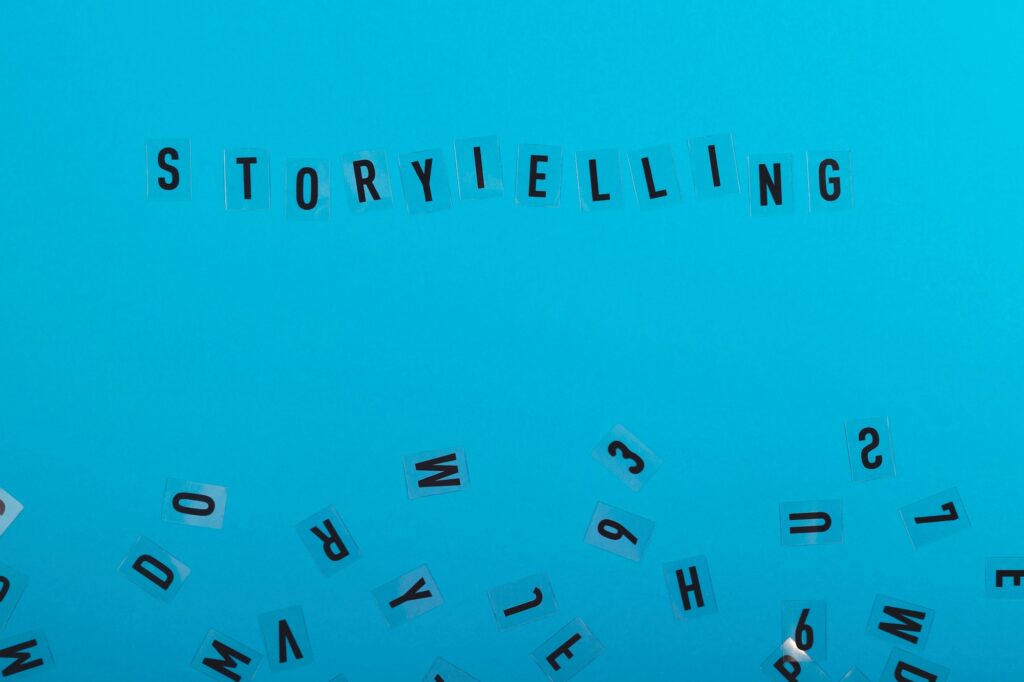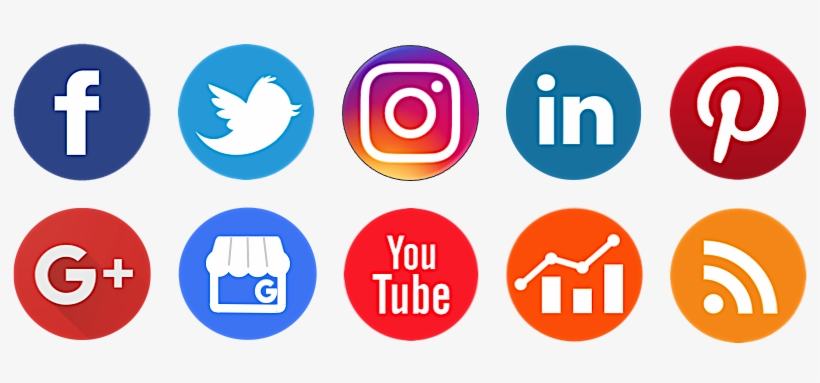Welcome to our latest blog post! We’re excited to dive into a topic that’s close to our hearts – storytelling in marketing. But what is that exactly? Let’s shed some light on it.
Storytelling is like a secret sauce in marketing. It’s all about sharing stories – real or fictional – that help people understand your brand better. It’s like sharing a piece of your brand’s soul, bringing your products or services to life in a way that facts and figures can’t do.
Why does storytelling matter? Think about your favorite books or movies. They’re full of stories, right? Stories that made you feel things, stories that stuck in your head long after you closed the book or turned off the TV. That’s the power of storytelling. And that’s the power your brand can harness to create stronger connections with your customers.
So, are you ready to learn more about storytelling in marketing? Are you excited to find out how it can help your brand stand out and resonate more deeply with your audience? Great! We’re here to guide you on this adventure. Let’s dive in!

Why Use Storytelling in Marketing?
Why storytelling is so powerful and why it matters in marketing.
Our minds are a big factor. You see, our brains are pretty amazing. They love stories! When we hear a good story, it sparks our imagination and makes us feel all sorts of emotions. It’s like our brains are built to understand and remember stories. This is why storytelling can have such a big impact on how people think and feel about your brand.
Emotions play a huge role. We all know what it feels like to be happy, sad, excited, or surprised. A good story can make us feel all these emotions and more. This emotional connection is a key part of what makes storytelling so powerful in marketing. When people feel connected to your brand, they’re more likely to remember you and choose your products or services.
Lastly, storytelling helps your brand to be unique and trustworthy. Think about it. There are probably lots of brands out there that offer the same things you do. So, how do you stand out? By telling your unique story. This helps people to see what makes your brand special and different. Plus, when your story is true and genuine, it builds trust. And trust is super important in making people choose your brand.
Creating Brand Stories
Now that we know why storytelling is so crucial, let’s talk about how to craft your own brand story. It’s like cooking up a tasty dish. You need the right ingredients and a good recipe. So, what are the key ingredients for a good brand story?
The first ingredient is the ‘character.’ In this case, the character is your brand. Just like in a good book or movie, your brand needs to be interesting and relatable. What does your brand stand for? What are its values? What makes it special? These are the things that will make your brand character appealing to your audience.
The second ingredient is the ‘narrative.’ This is the actual story you’re going to tell. It could be about how your brand was born, or how your products are made, or how your services have helped people. The key is to make your narrative engaging and memorable. Make sure it has a beginning, a middle, and an end, just like any good story.
The third ingredient is ‘authenticity.’ This means your story needs to be real and genuine. It’s not about making up tales, but about sharing the true heart of your brand. Authentic stories are the ones that truly connect with people, because they show that your brand is not just a faceless company, but a group of real people with real passions.
Successful Storytelling Examples

Let’s take a look at some different brands that are experts at using storytelling in their marketing.
Starting off with Nike. Their stories revolve around the spirit of athleticism and perseverance. Their iconic “Just Do It” campaign tells a narrative of pushing boundaries and overcoming obstacles. It’s not just about selling athletic wear, but promoting a lifestyle of determination and resilience.
Moving onto Airbnb. This is a brand that has mastered the art of storytelling by focusing on the unique experiences their service offers. Instead of merely offering places to stay, they market unique travel stories from hosts and travelers alike. It’s not just a lodging service; it’s about belonging anywhere and experiencing the world in a more personal way.
Lastly, we can’t forget Ben & Jerry’s. This ice cream company doesn’t just sell delicious flavors, they’re also deeply committed to social issues and they ensure it’s a part of their brand story. From climate justice to racial equality, they use their platform to raise awareness and create an impact. Customers don’t just buy an ice cream; they buy into a story of a better world.
Your Brand’s Storytelling Strategy
How you can apply the magic of storytelling to your own brand. Let’s create a strategy that tells your brand’s unique tale in a way that will engage your audience.
Firstly, we need to understand our audience. Think about who they are and what they care about. Your story should speak to their interests, needs, and values. Remember, your audience is the main character in your brand’s story. They should see themselves in it and feel like they are part of the journey.
Secondly, maintain a consistent brand voice. Just like how a character in a book or movie has a distinct voice, your brand should too. Whether it’s fun and quirky or serious and professional, your voice should remain consistent across all your stories. This helps your audience recognize and connect with your brand.
Now, let’s develop your narratives. What stories do you want to tell? It could be the story of how your brand started, how your products are made, or how your services have helped people. The key is to make these narratives engaging and relevant to your audience. And remember, good stories have a clear beginning, middle, and end.
Finally, Visuals. They play a critical role in storytelling. Photos, videos, infographics, and other visual content can make your stories more captivating and memorable. They’re like the illustrations in a children’s book that make the story more alive and colorful
Storytelling across Platforms

Great, we’ve crafted our brand story. Now, how do we share it with the world? The good news is, there are many platforms where your brand story can shine. Let’s discuss how to tell your story on different platforms.
First step is to focus on content marketing. This can be blogs, articles, e-books, and more. These formats are great for sharing longer, in-depth stories. For example, you could write a blog post about how your company started, or an article about the people who make your products.
Next up is social media. Platforms like Instagram, Facebook, or Twitter are perfect for sharing bite-sized parts of your story. You could post behind-the-scenes photos, customer testimonials, or fun facts about your brand. Remember to engage with your followers – their comments and shares are part of your brand story, too!
Then, there’s video marketing. Videos are a powerful way to tell stories because they can show and tell at the same time. You could create videos about how your products are made, interviews with your team, or stories of customers using your products. Make your videos engaging and easy to share.
Each platform has its strengths. The key is to choose the right platform for each part of your story. And remember, no matter where you tell your story, always keep it authentic and true to your brand.
Evaluating Success
So, you’ve started telling your brand’s story. That’s fantastic! But now you may be wondering: how do you know if your storytelling is working? Let’s talk about how to measure the success of your storytelling.
Take KPIs, or Key Performance Indicators into consideration. These are metrics that help you measure the effectiveness of your storytelling. Some KPIs you might look at include website traffic, social media engagement, and sales numbers. If these numbers are going up after you’ve started sharing your brand’s story, that’s a good sign!
But numbers aren’t everything. Remember, storytelling is about creating emotional connections with your audience. So, you should also look at qualitative data. Are people leaving comments about your stories? Are they sharing your content and mentioning your brand? These are all signs that your storytelling is resonating with your audience.
There are also tools available to help you analyze your success. These include analytics tools on social media platforms, SEO tools for your website, and customer feedback tools. They can provide valuable insights into how your audience is responding to your stories.
Remember, evaluating success is not just about looking at the results. It’s also about learning and improving. What stories did your audience love? Which ones didn’t work so well? Use this feedback to refine your storytelling and make it even better
Conclusion
We’ve come to the end of our journey, but your storytelling adventure is just beginning. We’ve explored the power of storytelling, looked at some awesome examples, and even cooked up a strategy for your brand. Now it’s up to you to write the next chapter.
Remember, your brand’s story is unique, just like you. It’s not just about selling products or services, but about connecting with your audience on a deeper level. It’s about making them laugh, making them think, and making them feel like they’re part of something special.
So, get out there and tell your story. Use the tools and tips we’ve discussed to craft a narrative that shines a light on your brand’s character. Share it across different platforms, measure your success, and don’t be afraid to revise along the way.
Remember, every great story has twists and turns. Don’t be discouraged if things don’t go perfectly at first. Keep listening to your audience, keep learning, and keep telling your story. You’re the author of your brand’s journey, and we can’t wait to see where it leads.